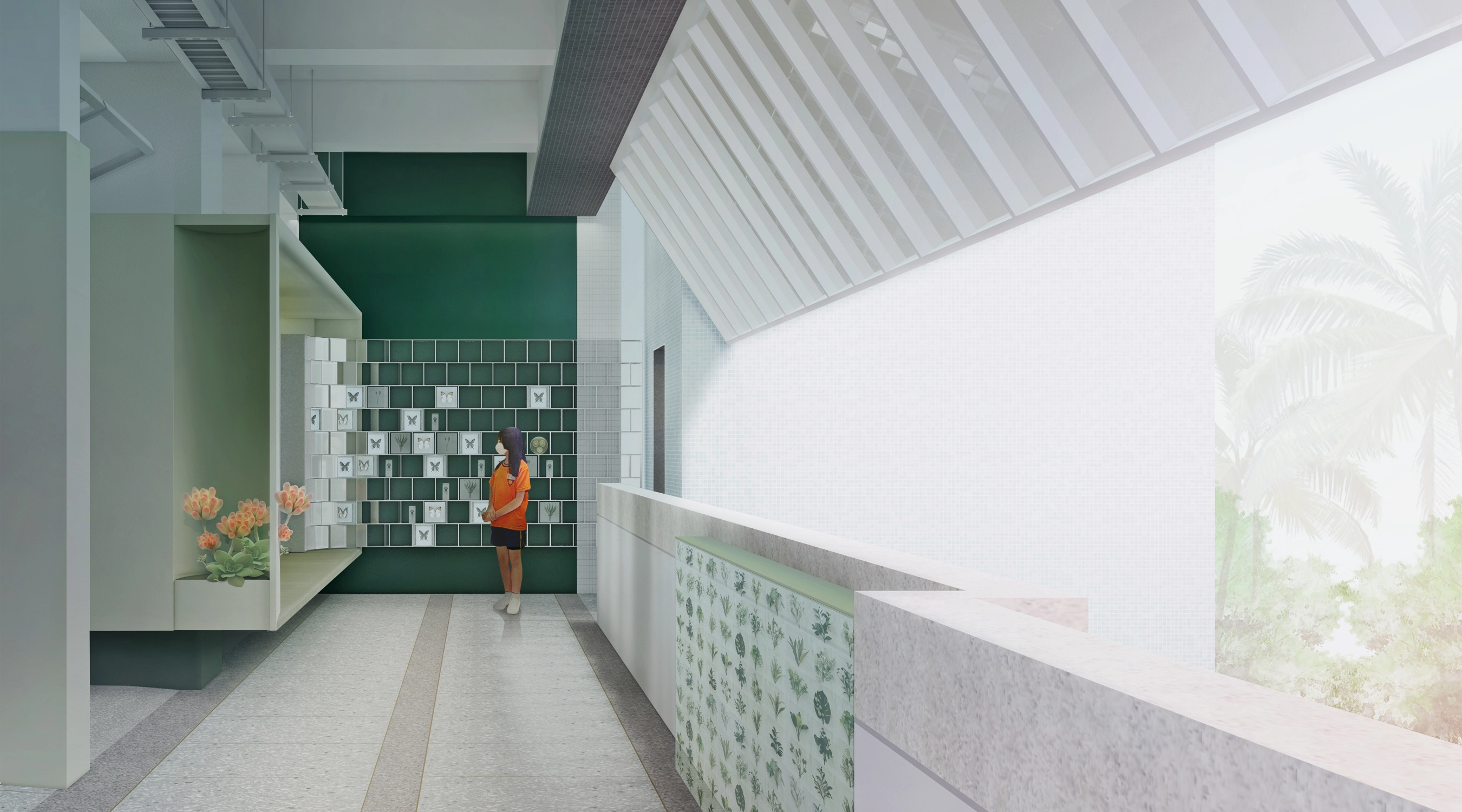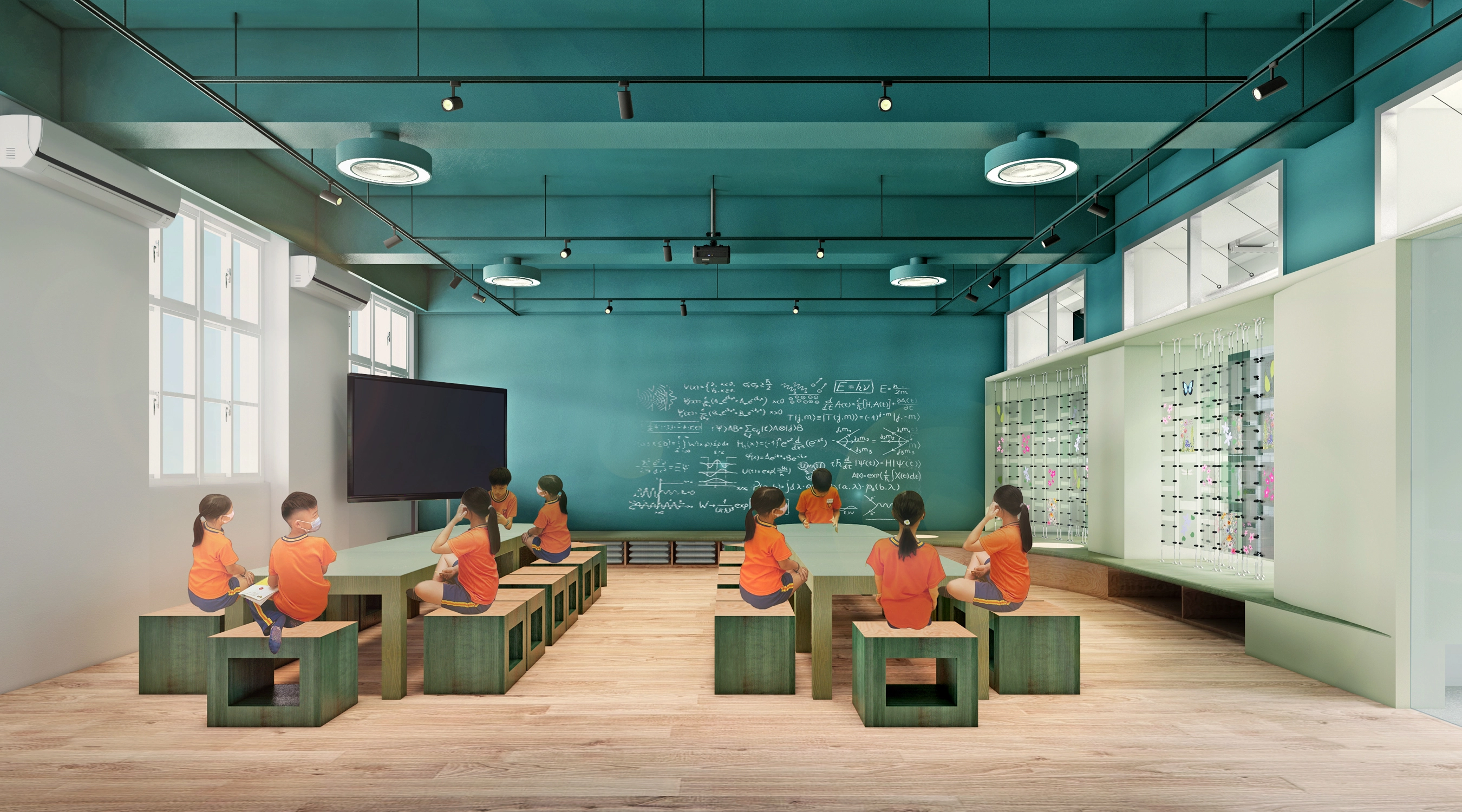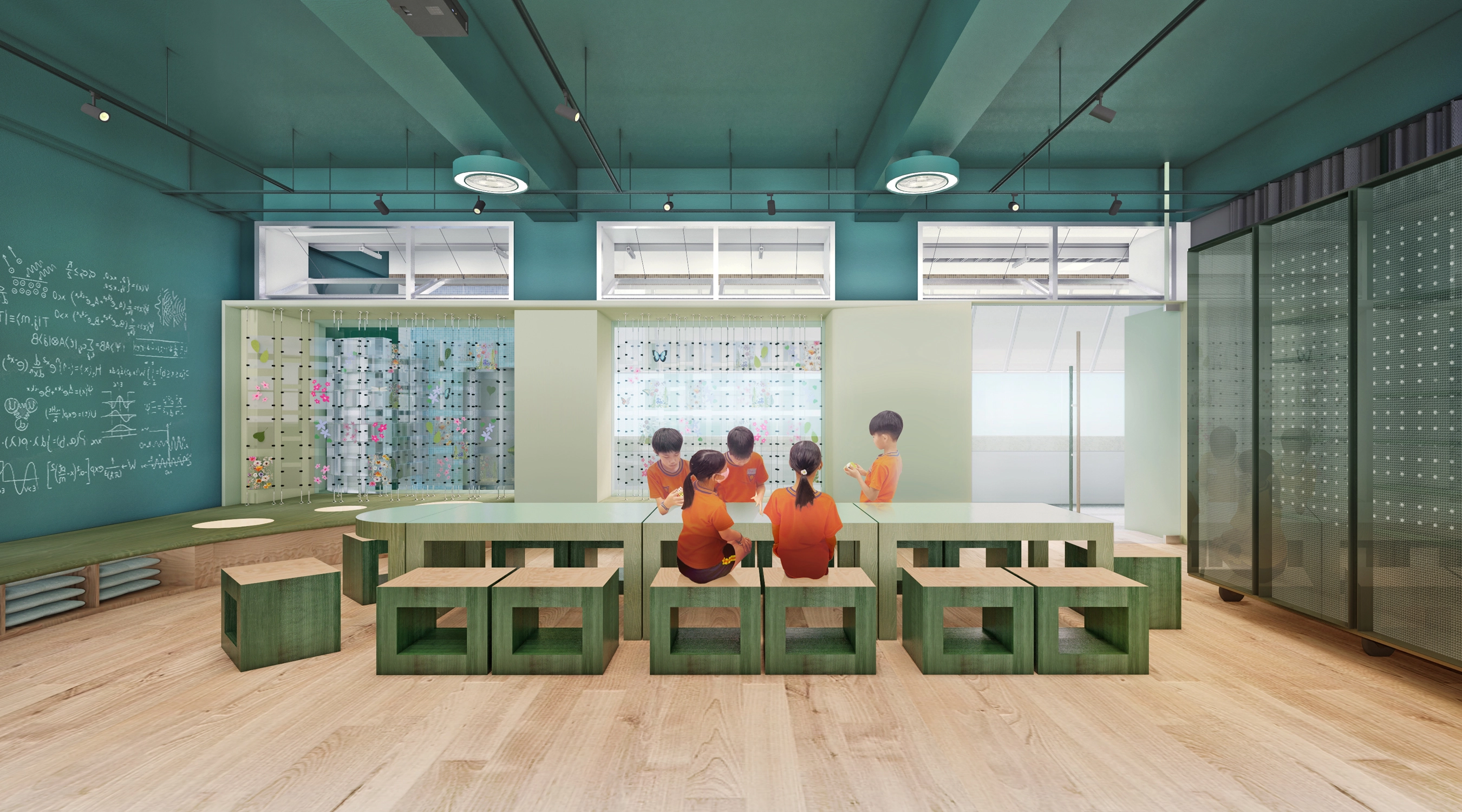位置 : 台北 環山路
用途 : 公共‧校園空間生態教室
競圖
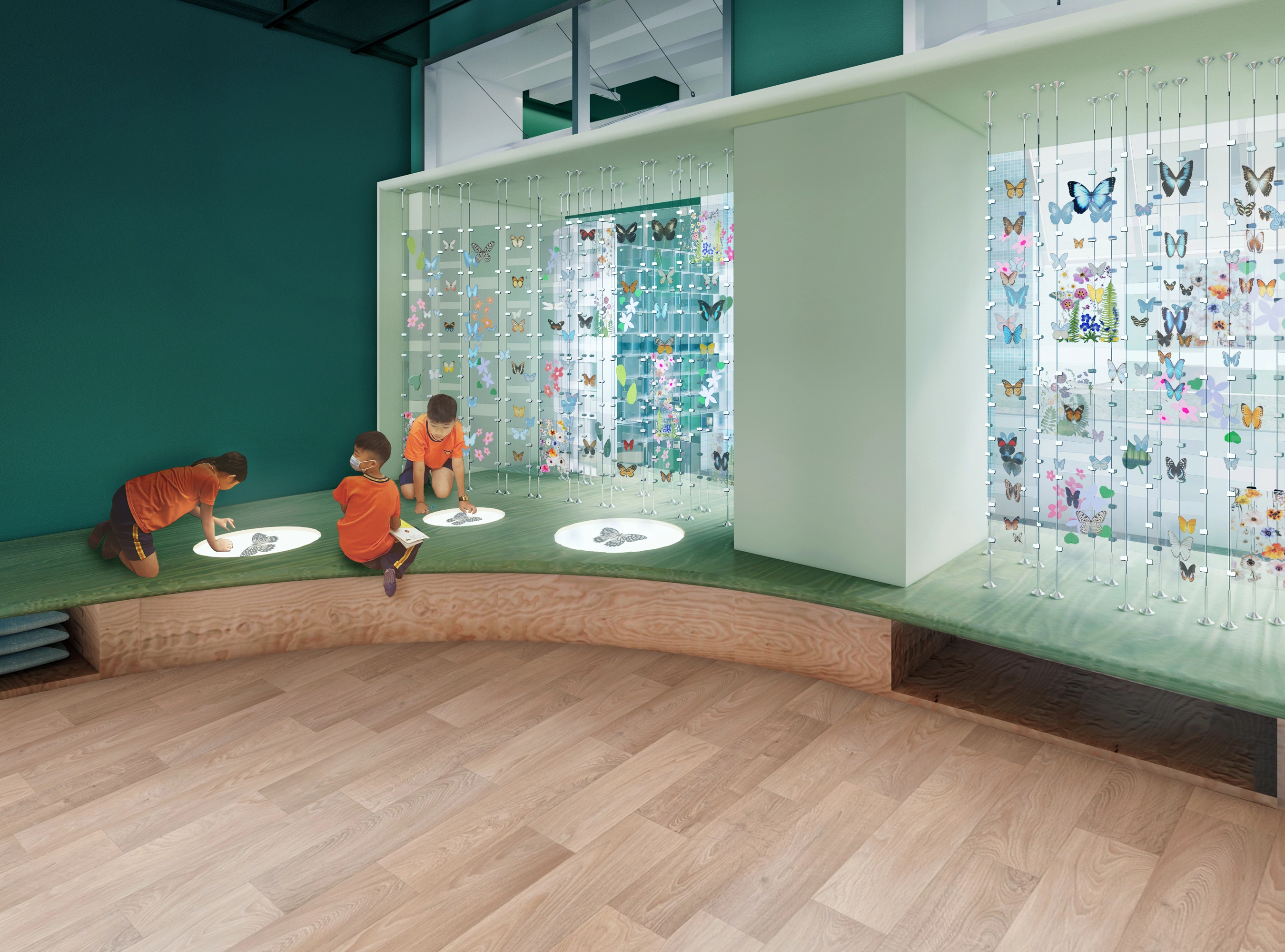
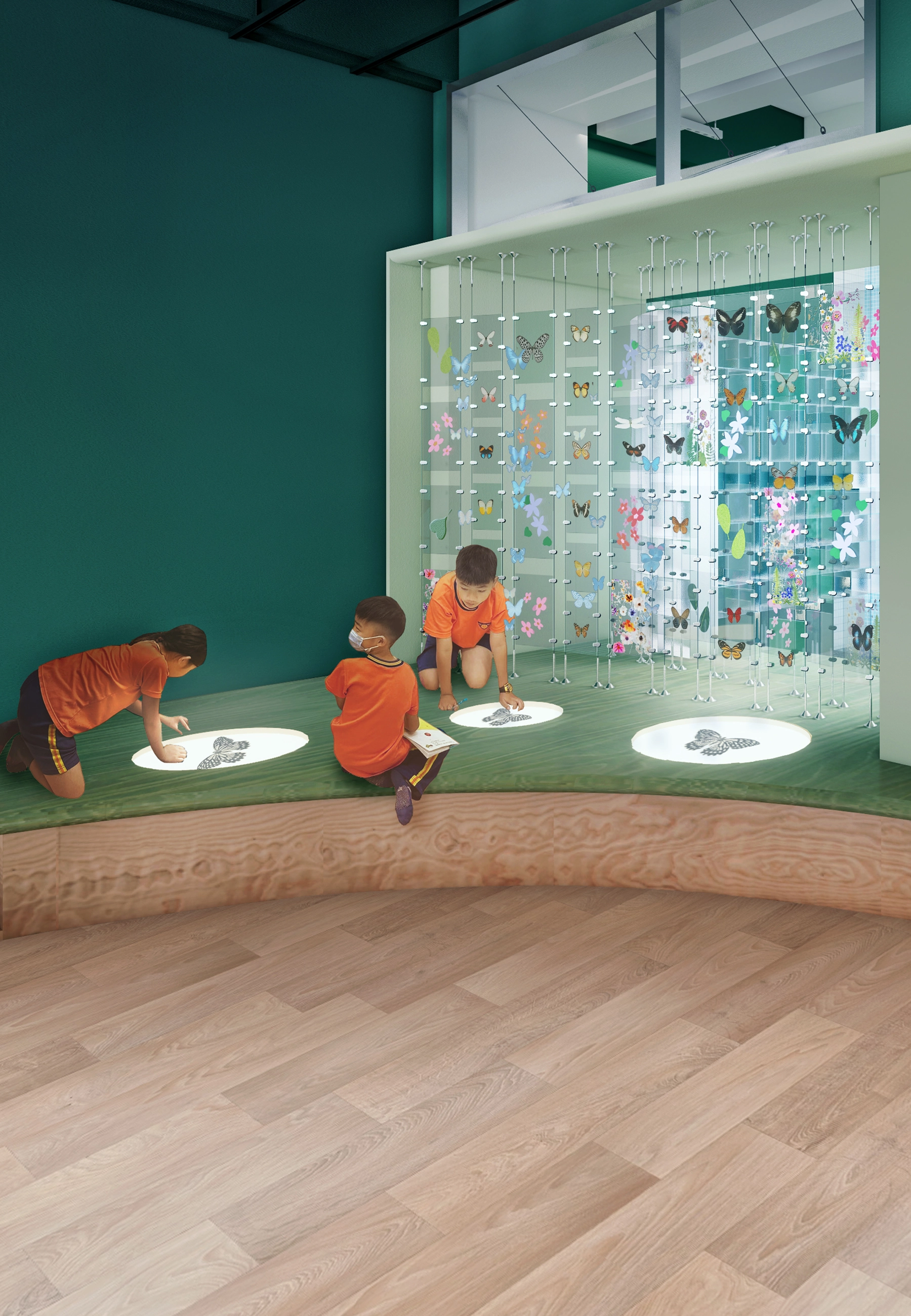
位置 : 台北 環山路
用途 : 公共‧校園空間生態教室
競圖
CLICK TO VIEW ALL IMAGIES
手作體驗
執行團隊提供多種尺寸模具與環氧樹脂材料,邀請學生一同參與教室更新,透過標本的蒐集製作,體驗創作樂趣與成就。
使用者參與
空間的完成透過使用者的參與持續演進。完成的標本成為教室牆面的一部分,空間形塑也因學童的參與而更具意義。
更新與延續
彈性展示系統讓學生可取回標本留作紀念,也讓新生以新標本取代參與。設計尋找行為傳承機制,使空間在記憶與行動中持續生長。
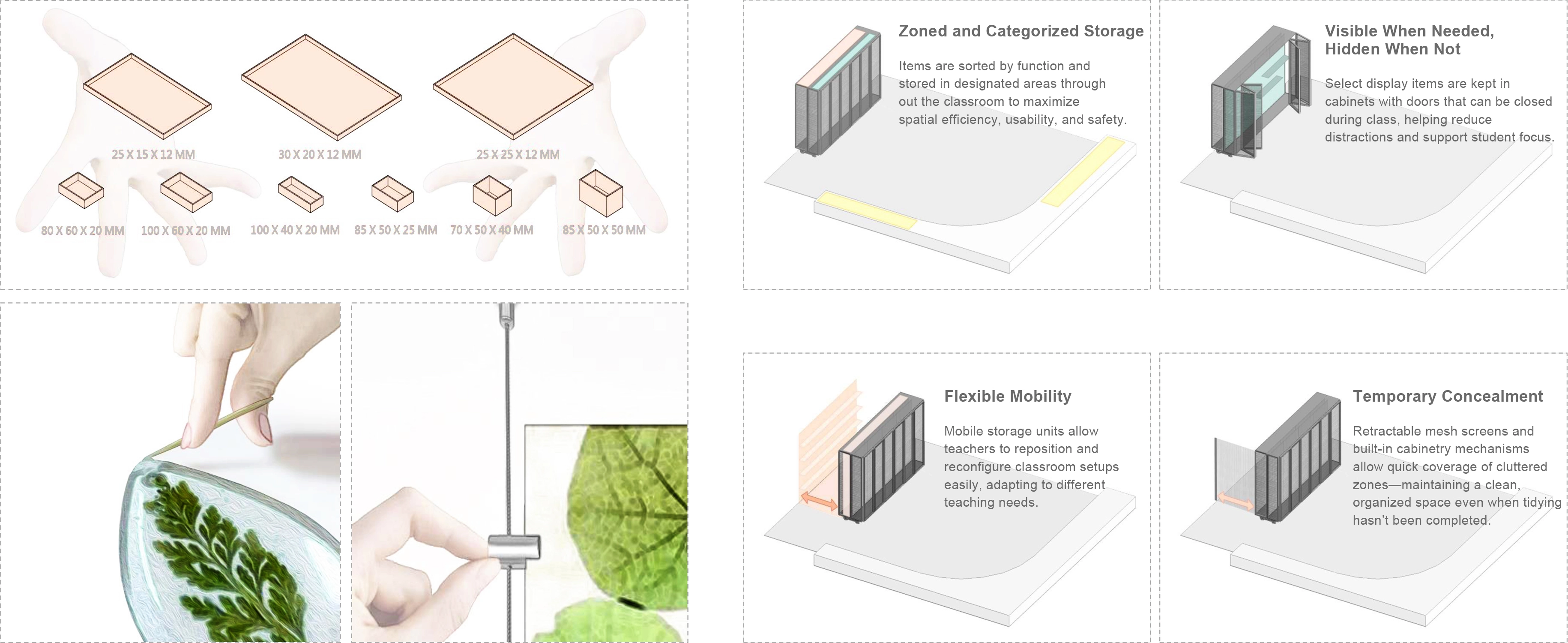
Hands-On Making
The design team provided molds of various sizes and epoxy resin materials, inviting students to participate in the classroom’s transformation. Through collecting and crafting specimens, children engage with the process and discover the joy of making.
User Participation
The classroom is never truly “finished.” It grows and evolves through student participation. Once complete, the specimens become part of the classroom’s physical fabric—a layered wall of contributions, memory, and meaning.
Ongoing Renewal
The display system is designed for flexibility. Students may reclaim their specimens as keepsakes, while new students create their own, replacing old ones. This cyclical process fosters a quiet ritual of renewal—where memory, activity, and space evolve together.
